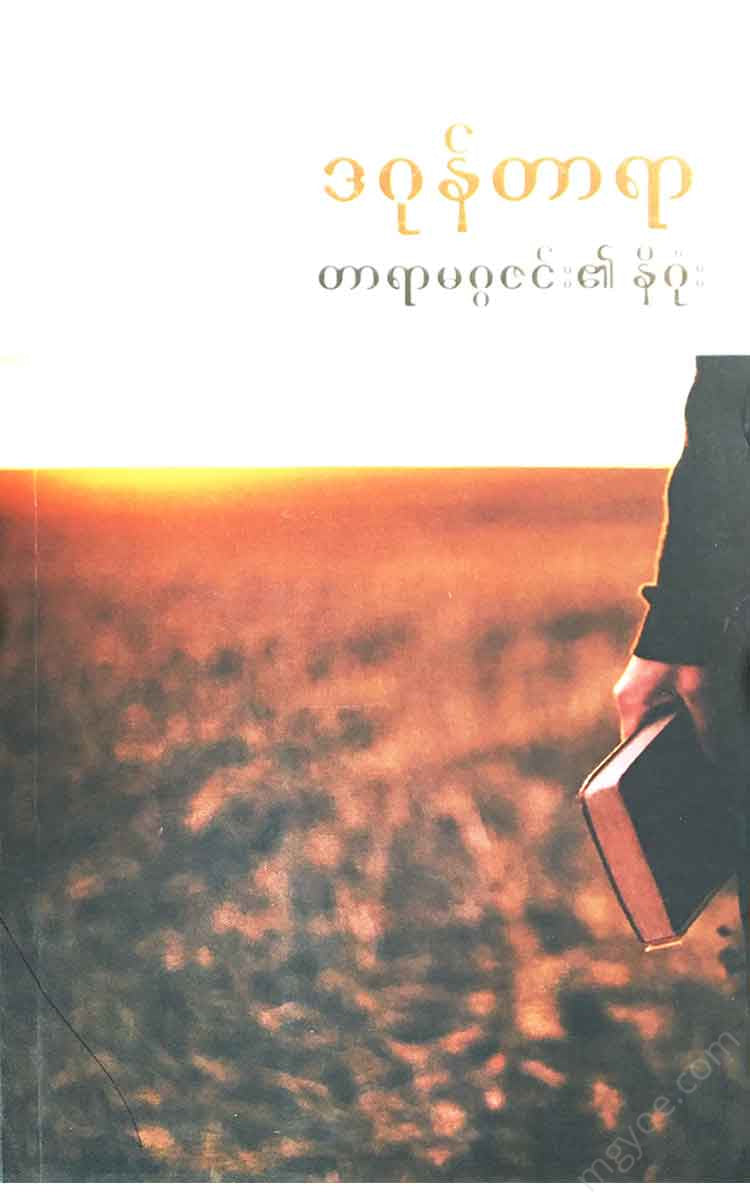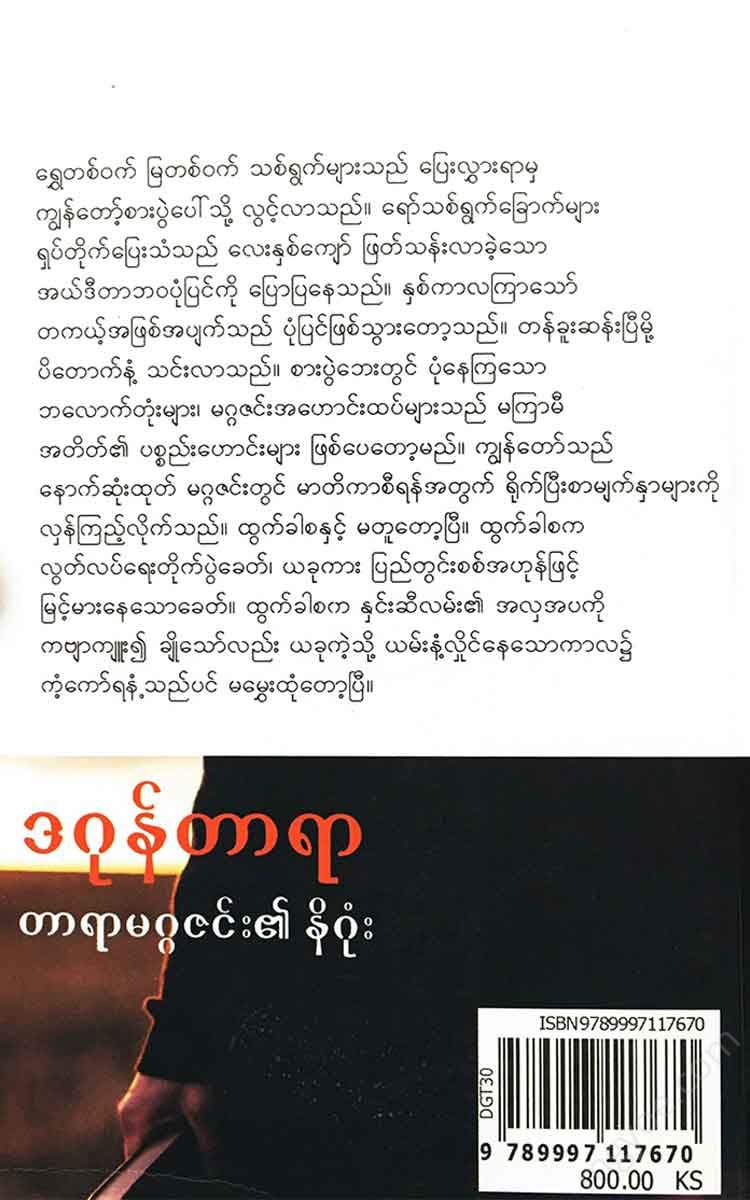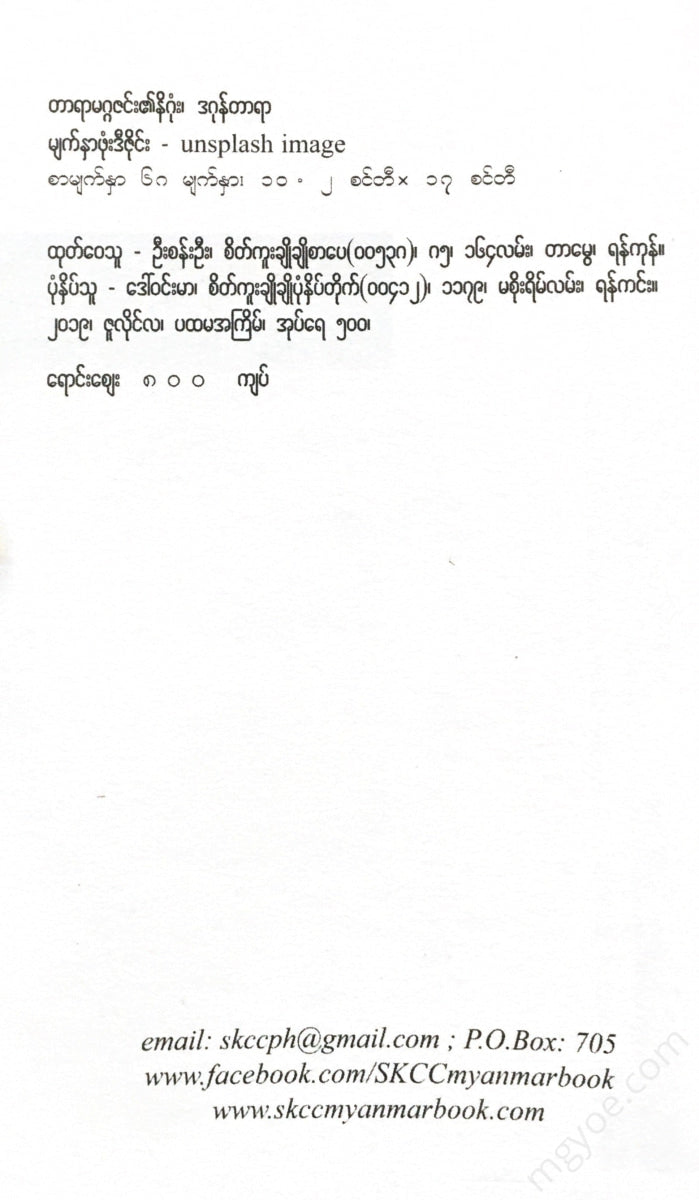စိတ်ကူးချိုချိုစာပေ
Dagon Tara - The Conclusion of Tara Magazine
Dagon Tara - The Conclusion of Tara Magazine
Couldn't load pickup availability
1950. Spring is half gold, half emerald. The snow has melted, and the sky is crystal clear. The wind is still playing with the leaves and the branches.
I was arranging the blocks on the paper from the writing desk. I was working on the layout for the May issue of Tara Magazine. Ko Thaung, the typewriter, was bringing me long, rough sheets of paper to edit. Ko Thaung arrived shortly after I bought the printer in 1948. It was amazing that he could read my bad handwriting. I could even point out the creases and wrinkles and he could read them. Now, the printer is in his house on (6) Street, which is next to the printer. Since buying the printer, he has been renting a house in Kaitan. The printer first moved from Kaitan to Shumawa, then to the Yankyaw Journal Building on 51st Street. Now, I am back in Kaitan again.
Kai Tan is the street I used to walk on when I was 3 or 4 years old. Kai Tan is a new place with buildings that were bombed during the war, huts, and new wooden houses. Kai Tan is completely different from what it was 25 years ago. In the past, it was a place for traders and brokers associated with the products of the delta, but now it is a place for the urban poor, clerks, and workers. It was the smooth end of the old English-style magazine, but now it is a war-scarred, muddy road, full of water, and even the back streets are dirty and smelly. It used to be called “William Street” in English. Around 1926, my father worked as a broker for the Black Brothers Company and rented a house on the waterfront opposite Kai Tan. The company paid a monthly rent of 100. Now, the family that came from the forest during the war has arrived.
The spring breeze blowing from the shoreline rustled the papers on the table.
I have decided to publish this May issue of Tara Magazine as the last issue. Tara Magazine, December 1946, was No. 1. This May 1950 issue is the last issue.
I stared at the white papers scattered across the table. My thoughts drifted back to 1946.
1946. I was in Rangoon on the day of the Burmese Army's surrender ceremony. It was February 17, 1945. In the large square that is now the Revolutionary Park. The golden color of the Shwedagon Pagoda was shining in the morning sun. In the green square, the colors of the swords were flashing. Every time a major raised his sword, it made a sound.
I was among the spectators on the side of the road, watching the Burmese army soldiers standing in rows as if in a military ceremony. My heart was stirred.
The bayonets and swords were thrown. They saluted the martyr. A major was riding his horse when it jumped, fell, and then rode back. The audience erupted in cheers.
Then, General Aung San, the Commander-in-Chief of the Burmese Army, delivered a speech. His speech was short and profound.
"Comrades, we must tread the ground and go to the battlefield. We will suffer poverty, we will starve... We must fight the nearest enemy."
The public already knew who General Aung San was talking about. Then, when the Burmese army marched into the city, the women welcomed it with flowers. I walked back to the Golden Valley. In the sky, airplanes were flying low and somersaulting, saluting the army. The treetops echoed with their voices and made a noise.
That night, the Minister of War and Commander-in-Chief, General Aung San, was reading the military proclamation. There was no electricity in General Zeya's house, so he had to read it by kerosene lamp.
I came to Yangon from Kyaiklat because I received a telegram saying, “Please come and see the Minister of War as soon as possible.” Burma Army Public Relations





